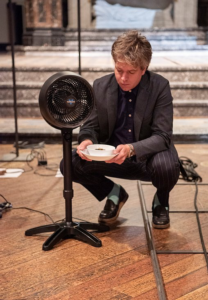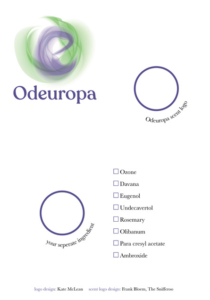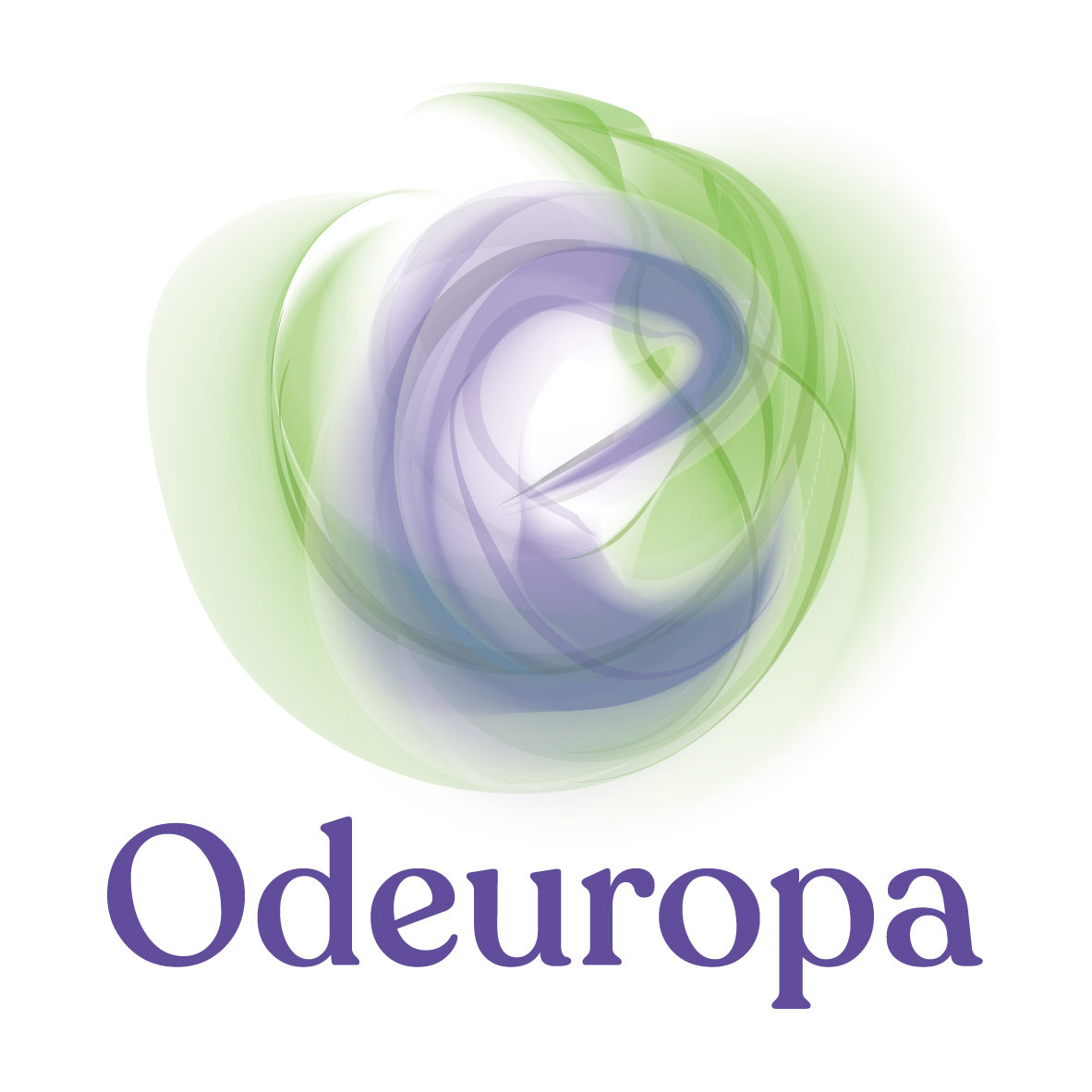Scent logos are mostly subtle signature scents of products or brands, distributed in shops and hotels to – usually subconsciously – convey a sense of authenticity for the public. But how do you design a scent for an academic research project? Caro Verbeek, olfactory art historian, interviewed olfactory artist Frank Bloem, founder of The Snifferoo about his design of the Odeuropa scent logo.

Most people have unconsciously smelled logos before, but they probably aren’t aware of it. Can you explain what a scent logo is?
A scent logo is usually a signature scent by which one recognises a product or a brand. For instance, the products by Apple are perfumed, when you unpack them you (often subconsciously) sense that this is a genuine Apple product. Or a hotel lures you to the breakfast buffet by diffusing the smell of coffee.
In what way does the olfactory logo you designed for Odeuropa connect to the aim of the project?
Because Odeuropa is all about scents I thought the smell should be more manifest than is usually the case in scent logos. I kind of ‘deconstructed’ the formula of the logo into individual components, similar to Odeuropa’s aim to open archives and unveil European heritage scents. Therefore, I used the letters from ‘Odeuropa’ as initials of odorants which have historical significance for Europe: the ‘O’ for ‘ozone’ and ‘R’ for ‘rosemary’ for instance. Together these scents blend in as a new whole.
You also selected ingredients such as ‘eugenol’ and ‘olibanum’ and even the highly cryptic ‘para cresyl acetate’. This sounds like the language of a chemist. What do these words mean?
They are the molecules and odour compounds I work with. Some are chemical constructs like ‘para-cresyl acetate’, which smells like horse manure: an important heritage scent for both rural and urban communities. Olibanum is the aromatic resin of the Boswellia shrub, also known as frankincense. The resin is both used in religious rituals, as in perfumery. Ozone is a smell that we sense in the air after a thunderstorm, which is caused by electricity in the air. But it is also the pleasant smell of your electric equipment. As the Odeuropa team consists of a large group of computer scientists, this scent refers to their work environment.
How did you align the scent with the visual counterpart which was created by the renowned smell mapper Kate McLean?
The visual logo is highly ‘smellable’ because of its smoke-like evaporating structure. It is almost as though the visual logo radiates the perfume I created.
You decided to make the recipe available to everyone, open source. Usually the world of scent and perfume is shrouded in mystery and secrecy. Why did you make this remarkable choice?
Odeuropa is a platform that is bound to unveil the secrecy around smell by opening up archives of the past to a broad audience, in search of the components of sensory history. Accessibility and open source are key to the Odeuropa project. As an artist I too wanted to break with the traditional secrecy of smell and perfumery. This way, everyone can re-create the logo for themselves.

